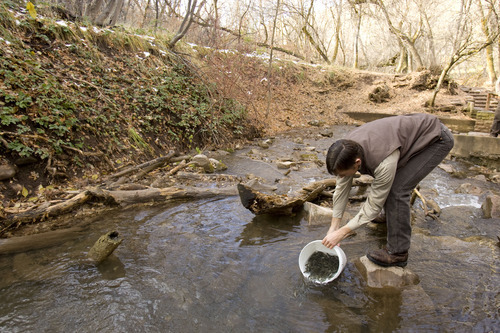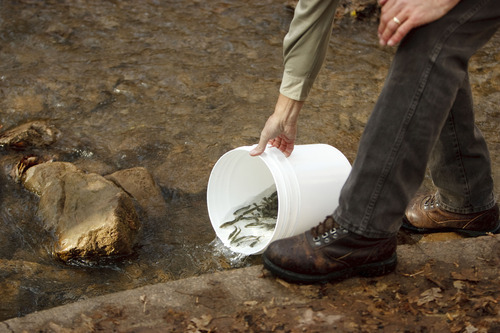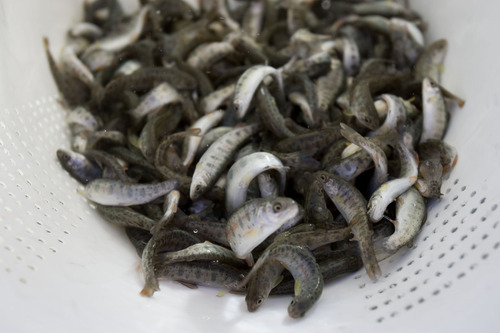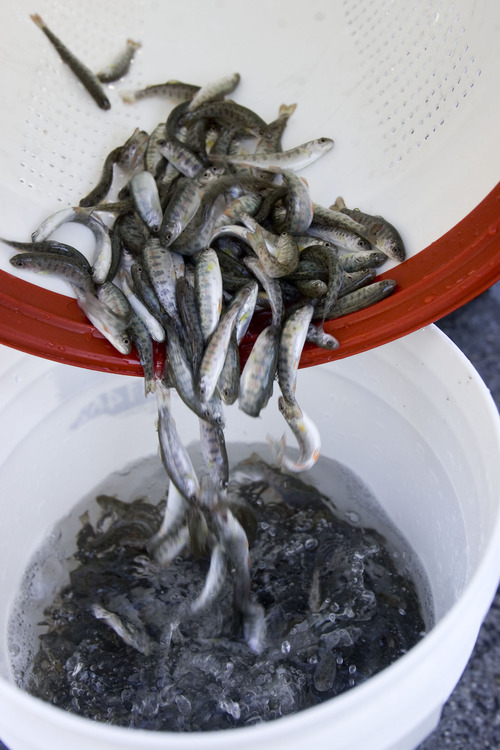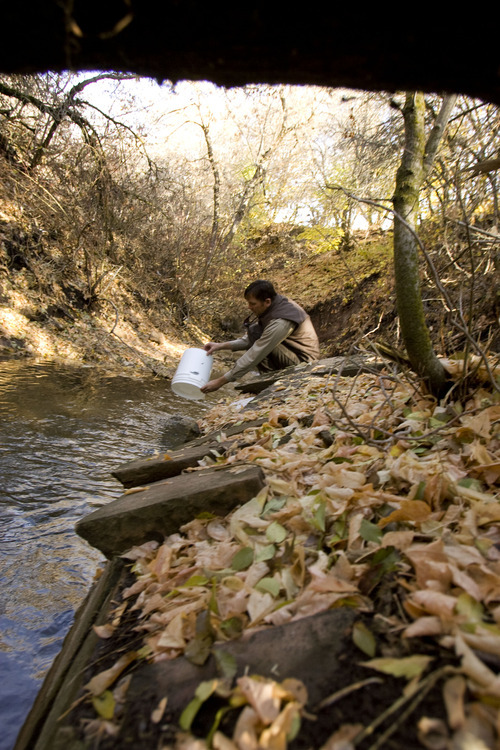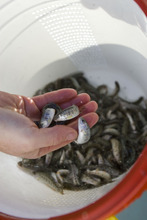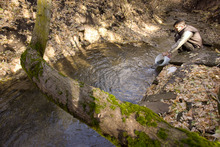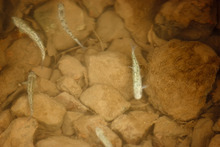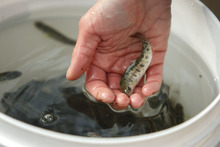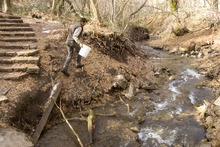This is an archived article that was published on sltrib.com in 2011, and information in the article may be outdated. It is provided only for personal research purposes and may not be reprinted.
There were plenty of victims in the two Chevron oil spills that flowed down Red Butte Creek from the Salt Lake foothills to Liberty Park and eventually to the Jordan River.
The first obvious impacts of the 2010 spills were ducks and geese at the Liberty Park pond slathered in oil. People who live along the creek were also immediately hit with fumes and toxic water in their backyards.
Few people realize it, but there were fish in Red Butte Creek before the spills. In fact, native Bonneville cutthroat trout have been in the creek for thousands of years.
Tuesday, roughly one year after the second spill, biologists from the Utah Division of Wildlife Resources reintroduced 3,000 Bonneville cutthroat trout, the state fish, at five locations along the creek.
Mike Slater, a regional aquatics director for the DWR, oversaw the process, which was funded for five years by Chevron to the amount of $22,000.
The 2- to 3-inch fish were released along the three miles of stream between Red Butte Garden and Arboretum and Liberty Park.
The majority of the creek in that stretch runs through backyards or underground and doesn't provide a lot of angling opportunity. Some would question the value of stocking fish in a creek few anglers visit.
"We are putting native cutthroat trout back in a stream where they resided long before people showed up. We lost them because of this incident, and it is our responsibility to get them back," Slater said.
Some groups have petitioned for Bonneville cutthroat trout to be listed as an endangered species. Utah wildlife officials have worked hard to protect and restore the cutthroat across the state. They did not ignore the Salt Lake Valley.
Slater said City Creek, Emigration Creek and Parleys Creek also have populations of Bonneville cutthroat. You may remember several years ago that the fish in Parleys Creek were wiped out all the way to Sugar House Park by a mysterious substance.
Slater said that population of reintroduced trout is doing well — at least until people find something else to pour in the creek.
"These fish populations can be wiped out with one spilled substance, whether accidentally or on purpose, or a wreck on the highway that falls in the stream," Slater said. "This is where wild meets the urban interface, and wildlife usually loses when that happens."
The small creeks flowing out of Wasatch Front canyons are more than yard decorations for homes along the waterways; they are the homes for native trout.
When people mess up those homes, the proper thing to do is to clean them up and get native species back where they belong. It doesn't matter that few of the fish will get longer than 12 inches and that many will never rise to a fly cast by an angler.
Brett Prettyman is an outdoors columnist. Reach him at brettp@sltrib.com.



